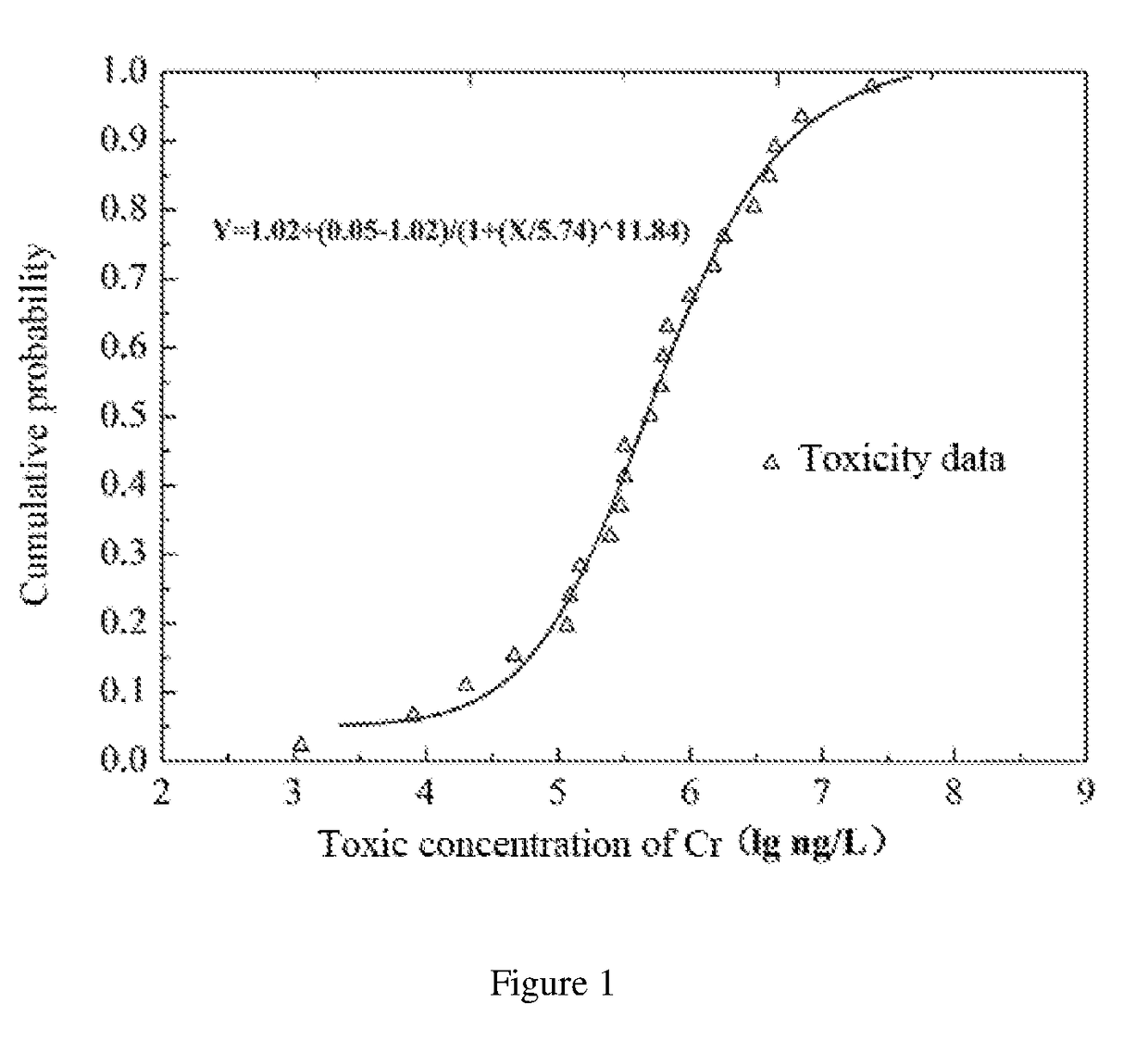Method for ecological risk assessment of heavy metal in river basin sediment based on toxicity effect
- Summary
- Abstract
- Description
- Claims
- Application Information
AI Technical Summary
Benefits of technology
Problems solved by technology
Method used
Image
Examples
example 1
[0040]Assessing the ecological risk of heavy metals in a lake basin sediment:
[0041]1. screening the main aquatic species of the assessed basin environment according to the breadth and quantity of biodistribution; the main aquatic species comprise: pyrrophyta, scenedesmus and cryptophyta belonging to phytoplankton, wild lotus, duckweed and Azolla pinnata belonging to hydrophyte, Arenaceous sanding, Brachionus calyciflorus and bosmina belonging to zooplankton, Protosalanx hyalocranius, carp and Coilia nasus taihuensis belonging to fish, Corbicula fluminea, chironomus and Bellamya aeruginosa belonging to zoobenthos;
[0042]2. sampling sediments within the assessed basin area, determining the types of heavy metals to be detected and numbering them: when there are 8 kinds of heavy metals to be detected, these heavy metals are numbered Cr(1), Ni(2), Cu(3), Zn(4), As(5), Cd(6), Hg(7) and Pb(8);
[0043]3. measuring the concentration of the ith metal of each sediment sample one by one, and calcu...
PUM
 Login to View More
Login to View More Abstract
Description
Claims
Application Information
 Login to View More
Login to View More - R&D
- Intellectual Property
- Life Sciences
- Materials
- Tech Scout
- Unparalleled Data Quality
- Higher Quality Content
- 60% Fewer Hallucinations
Browse by: Latest US Patents, China's latest patents, Technical Efficacy Thesaurus, Application Domain, Technology Topic, Popular Technical Reports.
© 2025 PatSnap. All rights reserved.Legal|Privacy policy|Modern Slavery Act Transparency Statement|Sitemap|About US| Contact US: help@patsnap.com

